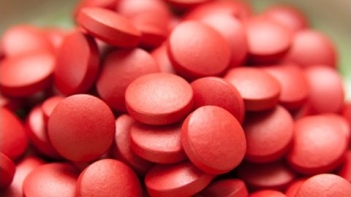Have you ever noticed that you seldom hear of men having anemia? It’s true.
Anemia more frequently and commonly affects women. When men have lost blood due to trauma, they bounce back faster than women do.
These things are tied together. There is a physiological reason why anemia is a women’s disease.
Anemia is, strictly speaking, a decrease in the normal number of red blood cells, or a reduction in the quantity of hemoglobin in those red blood cells.
Hemoglobin is the chemical in red blood cells that allows them to carry oxygen. Without a sufficient quantity of red blood cells or hemoglobin, your body’s ability to carry oxygen where it is needed is compromised. This can occur from a pathological condition, or from trauma.
Obviously women are different from men in that women menstruate throughout their childbearing years, starting at menarche at puberty at around age 11, and continuing through menopause, which occurs on average around age 51.
The amount of blood that is lost during a normal menstrual cycle can vary greatly, so much so that what is normal for one woman can be detrimentally heavy for another. It would be difficult to find a standard across a group of women.
The larger and more prevalent factor affecting women’s propensity for anemia is muscle mass. Women have a smaller muscle mass than men. This directly impacts bone size.
Smaller muscles equal smaller bones. It is in the bones where the cells that actually generate the blood reside. If you have smaller bones, you have fewer of these blood generating or hemopoetic cells, and therefore a smaller capacity to generate blood.
This seemingly minor biological footnote, that men have greater capacity to generate blood than women, has profoundly far reaching affects on human society.
It forms the sociological basis for men to be the hunters and for women to be the gatherer. Take for example our paleolithic ancestors Og, and his mate Ig.
Og can go out and wrestle with the giant tigers, and have a better chance of rebounding from the injuries he will receive from their claws than his mate Ig would.
Ig will be better able to deal, physiologically speaking, with the thorns of the berry bush that scratch her as she fulfills her role as gatherer in the hunter-gatherer society.
In conclusion, anemia is as much a physiological inheritance of the female of the species as it is any prevalence to pathology.





Thanks for the info. The two most important women in my life are anemic: my mom and my wife. I can understand them a little bit more, especially when they’re burned out after their period.